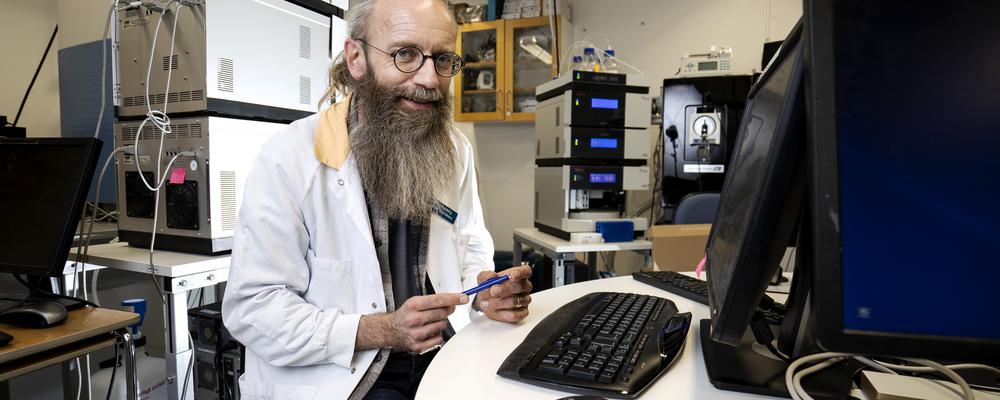
- Home
- News and events
- Find news
- Improving diagnostics for various diseases that cause dementia
Improving diagnostics for various diseases that cause dementia
In the near future, a simple blood test may be used to show whether a person has started to develop e.g., frontotemporal dementia. The Swedish Research Council is investing just over SEK 28 million in the group at the University of Gothenburg that has already made great progress in working with similar tests for Alzheimer's disease.
There are hundreds of diseases causing dementia. The most common is Alzheimer's disease, but there are many more, such as frontotemporal dementia (also called frontal lobe dementia), dementia with Lewy bodies and vascular dementia. Symptoms may initially be diffuse. It is therefore difficult to make a definite diagnosis based on the clinical presentation and the examination methods available today.
Exciting and difficult

“The biomarkers for screening and monitoring different disease processes in Alzheimer's disease that we have developed are now so accurate and so well established that it is time to investigate other neurodegenerative diseases. We have already started our work to develop similar tests for frontotemporal dementia, dementia with Lewy bodes and Parkinson's disease,” says Henrik Zetterberg, professor of neurochemistry at the University of Gothenburg and senior physician at Sahlgrenska University Hospital.
“It will be exciting to work on new biomarkers for non-Alzheimer's neurodegenerative diseases,” he continues, noting that it is also a difficult task.
“The changes in the brain in frontotemporal dementia, for example, are not as clear as in Alzheimer's disease, thus making the changes more difficult to measure. In addition, there are many molecular subgroups of the disease. Researchers who have tried to find specific biomarkers for these brain changes have so far failed, but improved measurement methods and promising pilot data make me confident that we will now succeed,” says Henrik Zetterberg.
Creative research environment
For example, the team will investigate variants of biomarkers of disease progression involving the protein tau, where the research team is a world leader in Alzheimer's research. They have already identified protein changes in spinal fluid that are associated with erroneous folding of a protein called TDP-43, which is observed in some forms of frontotemporal dementia and ALS. In national and international collaborations, they also work on improving biomarkers based on disease processes involving the protein alpha-synuclein. The tests will first be developed for spinal fluid, and then transferred to blood sample analysis, as the research team previously did with the Alzheimer's tests.
The grant from the Swedish Research Council is a so-called council professorship to Henrik Zetterberg, who together with Kaj Blennow leads the productive and successful research environment within clinical neurochemistry, located at Mölndal Hospital. Around 80 physicians, biomedical analysts, chemists, biologists, physicists, engineers and other researchers work here in a clinically and academically integrated creative environment run jointly by the University of Gothenburg and Sahlgrenska University Hospital.
Ultra-sensitive methods
The council professorship provides just over SEK 28 million over eight years, and is thus a long-term investment in research to improve the differential diagnosis of neurodegenerative dementia-causing diseases.
“It feels very big. A council professorship is an extremely nice grant, and it is also a great vote of confidence to receive a grant that runs for as long as eight years,” says Henrik Zetterberg, who also recently received one of the EU's most prestigious research grants, the ERC Advanced Grant.
The future development of biomarkers for neurodegenerative diseases depends on new advanced methods within e.g., mass spectrometry and immunochemistry. Soon the laboratory in Mölndal will have another refined method in place, called NULISA, which will be useful in the work to find functioning biomarkers for different forms of dementia. In simple terms, the method allows the filtering out of interfering background noise in antibody-based assays, which together with signal amplification provides extreme sensitivity.
TEXT: ELIN LINDSTRÖM

